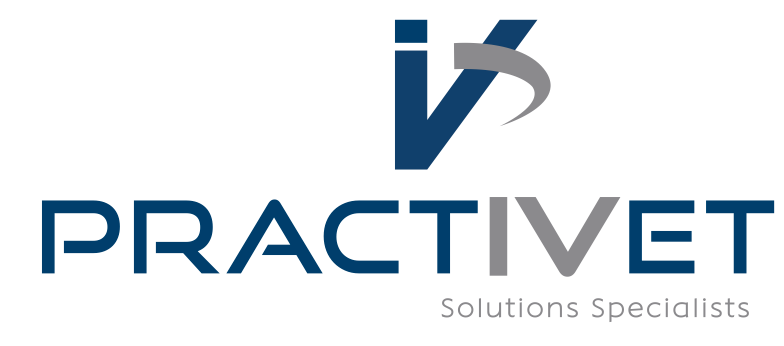What is USP?
The United States Pharmacopeia (USP) is a nonprofit organization that sets purity and safety standards for medications and foods. Recent updates to hazardous drug (HD) handling guidelines were published in 2014 then updated in 2016, by USP. These new regulations will affect any facility housing or administering chemotherapeutics or any other hazardous drug (NIOSH HD list 2016 - click here to download the list). It is imperative that facilities understand the risks (click here to download the document) associated with handling of HD and the controls available to protect the staff and the public. Many of the new updates revolve around supplemental and engineering controls. For many veterinary hospitals, these changes have been confusing and have sparked numerous conversations about proper implementation of these changes.
Hazardous drug handling safety is often a topic that is under-discussed in veterinary medicine. In recent years, new guidelines have been announced, published and will go into effect later this year. These new guidelines are outlined in USP 800 (click here to download the document). These new guidelines discuss new required engineering controls, PPE, closed system transfer devices (CSTD), employee medical monitoring and even environmental contamination testing.
NIOSH Hazardous Drug List (2016)
The National Institute for Occupational Safety and Health (NIOSH) hazardous drug list (2016) identifies drugs based upon hazard, which is further classified by group. The NIOSH hazardous drug list consists of three groups. Group one lists drugs that are chemotherapeutic/cytotoxic drugs. Group two consists of drugs that have one or more HD criteria set forth by NIOSH. Group three lists drugs that pose a reproductive hazard. Traditionally the HD list has consisted of human health care medications, but with increasing numbers of veterinary specific drugs, even if a drug is not listed, employees should always refer to the SDS for complete information. The NIOSH HD list is updated every two years. The 2018 list should be published within the first quarter of 2019.
Enforcement and Controls
The new guidelines set in USP 800 become enforceable as of Dec 2019. Although the specifics of enforcement are not fully understood at this time, OSHA (Occupational Safety and Health Administration) and State Veterinary Boards (VMB) will most likely be the groups enforcing these new guidelines. These new guidelines cover HD handling from shipment to disposal. One of the major areas of change in USP 800 relates directly to HD compounding. Compounding (sterile vs non-sterile) loosely interpreted, refers to all drug preparations. For compounding, USP 800 states the facility MUST now have an externally vented biological safety cabinet (BSC) or containment primary engineering control (C-PEC). The BSC must be located within a negative pressure room also known as containment secondary engineering control (C-SEC). Both engineering controls are now requirements for non-sterile and sterile compounding. There are additional supplemental controls such as closed system transfer devices and PPE. Closed system transfer devices (CSTD) are now REQUIRED for administration, but not for preparation and approved PPE is now required or recommended for multiple steps in the handling process.
For many veterinary practices, chemotherapy delivery may not be a common occurrence within the hospital, but it is important for employees to be aware, there are other drugs that can pose an exposure health risk. Having a broad understanding of the NIOSH HD list, USP 800 and which precautions to take based upon drug group, should be included in facility standard operating procedures (SOP). Regardless of the volume of HD handled within the facility, the same compliance guidelines will apply.
Personal Protective Equipment (PPE)
Impervious gowns, double gloving, hair covers, shoe covers, eye protection and respirator masks are all required PPE for group one drug handling. The gowns should be cuffed and disposable. Two pair of approved ASTM (American Society for Testing and Materials) nitrile gloves should be worn. One pair of gloves should be secured under the cuff and the second pair, atop the gloves. Hair covers and shoe covers are also a new requirement within USP 800. All PPE should be disposed of properly in yellow chemotherapy waste bins and disposed of in accordance with your state regulations.
Closed System Transfer Devices (CSTD)
With the updated requirements for CSTD, many hospitals are implementing these devices into their administration process. These systems work in two basic ways, by filtration or by barrier. Understanding each system, their function, components and limitations are vital to proper use and protection. The CDC/NIOSH is currently developing standardized testing procedures for systems based upon containment method.
Clinical Impact
Although there is no clearly defined regulation system for the veterinary space, the impact of chronic HD exposure to employees implores facilities to adopt these new guidelines for compliance. One of the values PractiVet can bring to your facility is the assistance in education for facilities on achieving USP 800 compliance. If you have additional questions or want to know what steps your facility needs to take to achieve compliance, reach out to our Director of Education Jenny Fisher at Jenny@practivet.com or your area PractiVet product specialist.

